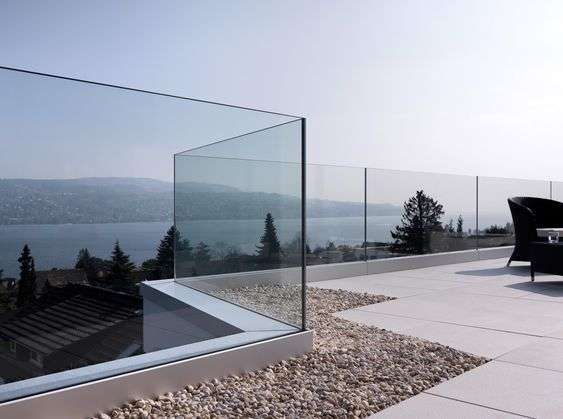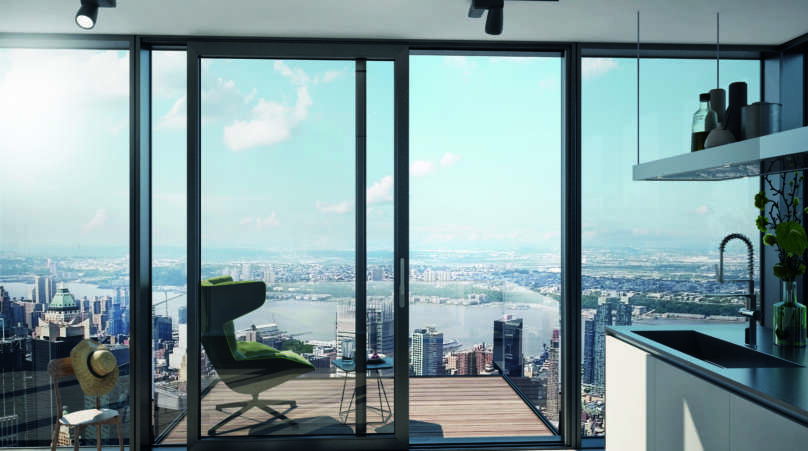Energy efficiency implies a series of measures that are undertaken with the aim of reducing energy consumption, which do not impair working and living conditions, but increase the level of comfort and convenience. Recently, it is one of the most current topics in the field of architecture and construction, both in the world and in our country, so in this sense, more and more attention is being paid to new construction, but also to the energy rehabilitation of existing buildings.
The first step towards improving the building’s energy efficiency is to replace the windows, since the biggest energy losses are realized through them. The combination of the top-quality Veka PVC profile, extraordinary sealant, fittings and functional thermal glass results in a perfect window that meets all the requirements of modern construction: high energy efficiency, excellent heat and sound insulation, durability, ease of use and maintenance, as well as a high degree of safety.
Unlike old windows, which do not completely seal, new modern PVC windows provide exceptional insulation. This reduces the costs of heating in winter and cooling in summer and contributes to energy savings. In order for the window to be of high quality, all its components, such as the profile, glass and fittings, must be of high quality. If only one of these elements is bad, the coefficients and quality of each individual element and, finally, the window itself are lost. In order to have a high-quality and long-lasting window, pay attention to all its parts.
PVC window profiles
PVC carpentry, in addition to providing a simple way of maintenance, should provide adequate thermal insulation and thus reduce heating and cooling costs, which contributes to energy savings. AD Logistic produces PVC joinery exclusively in RAL class A quality that fully meets the thermal characteristics.
Thanks to their superior properties and the guaranteed outer wall thickness of 3.0 mm, which provide a decisive advantage and safety during processing, windows with optimal thermal and sound insulation are obtained, which provide stability and functionality for many years.
Thermal insulation of windows and doors
Thermal insulation is a key factor in the energy efficiency of windows and doors. High-quality insulation prevents heat loss in winter and heat entry in summer. The coefficient of thermal conductivity “U” indicates how much heat in watts passes through 1 square meter of material of a certain thickness in one second, and the unit in which its value is expressed is W/m2K. The lower the value of the thermal conductivity coefficient, the better the thermal insulation. Depending on the window profile and window glazing, this coefficient can have different values - from 0.8 W/m2K, for the best quality windows with low-emission three-layer gas-filled glass, up to 3.5 W/m2K, for old wooden single-pane windows. The European recommendation is that this coefficient does not exceed 1.8 W/m2K.
Glass
Saving energy starts with choosing the right glass. From the external appearance, the differences in the quality of the glass cannot be seen, although they are large. That’s why it’s important to ask about its quality and its insulation value, in order to get the best possible thermal insulation and significantly reduce heating and cooling costs.
When buying windows, in addition to choosing the profile system from which they are made, great attention should be paid to the glass that is installed, because it makes up the largest area of the window, even up to 80%, and it is extremely important that it be of the highest quality. Choose glass with a good thermal insulation coefficient (Ug). Using a larger number of glasses leads to a reduction in the heat transfer coefficient. The lower the “Ug” value, the greater the insulation of the glass.
Sealing
PVC profiles are made with two and three levels of sealing, which reliably protect against both low and high temperatures, moisture, noise and other external influences. Good sealing between window frames, i.e. doors and walls is of key importance for their energy efficiency.
Blinds
Blinds create an additional insulating layer on windows and doors, so they represent another important detail when improving the energy efficiency of carpentry.
Installation of windows and doors
For a well-insulated building with the best energy efficiency coefficient, in addition to high-quality windows and doors, it is also important that the carpentry is professionally produced and installed, while respecting the regulations and rules of the profession. Now in our country, as is already the standard in Western Europe, more and more are opting for RAL assembly, which uses special tapes that are glued from the outside and inside at the joints of the window and the wall.
One of the variants of RAL assembly includes expanding strips, which are used instead of pur foam. The goal of RAL assembly is to save energy and money, that is, to achieve maximum energy efficiency of windows and prevent moisture from entering the home. The special tapes used for installation have the purpose of reducing the penetration of water and the formation of condensation, which affects the insulating characteristics of the window.



